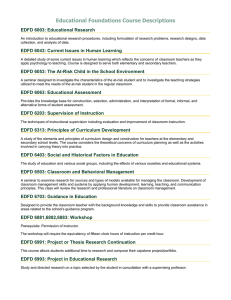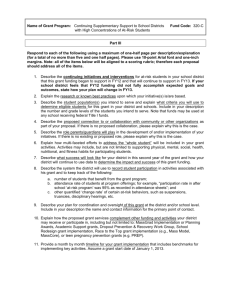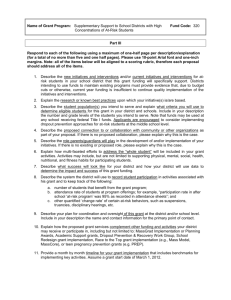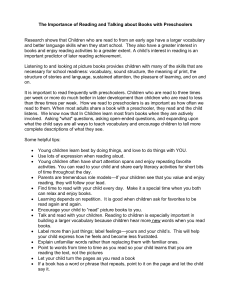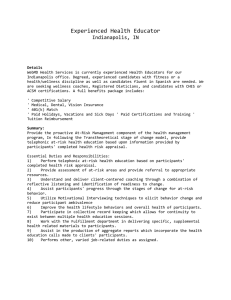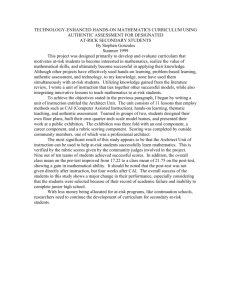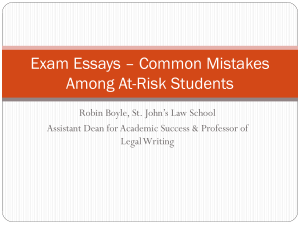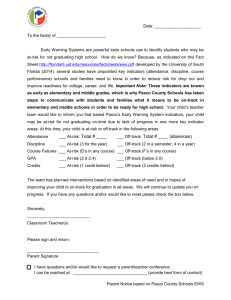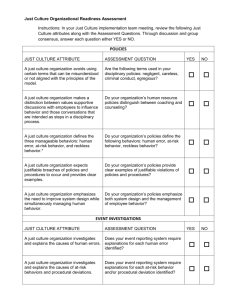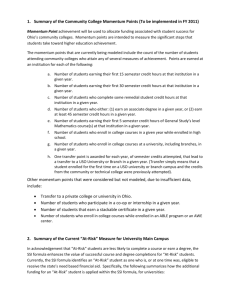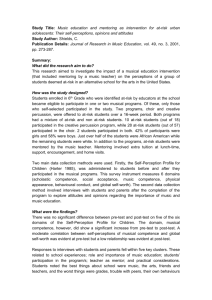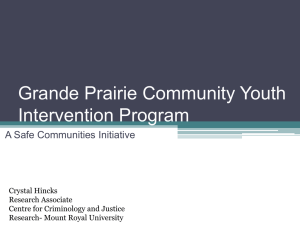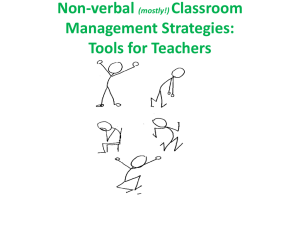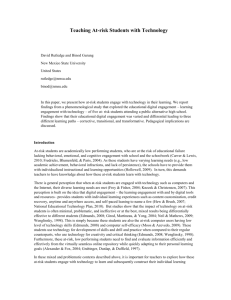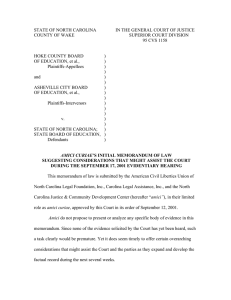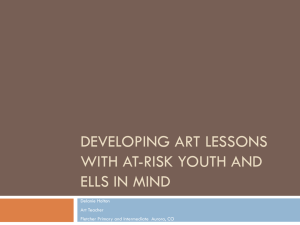Early Intervention…
advertisement
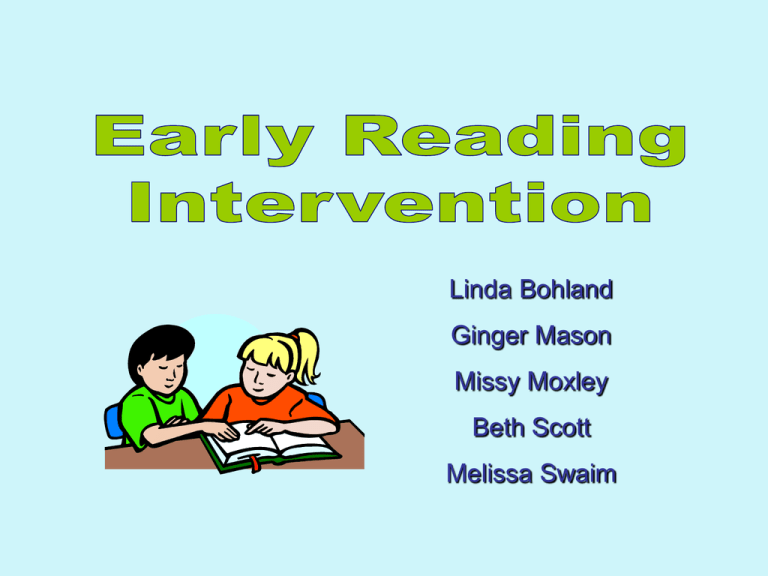
Linda Bohland Ginger Mason Missy Moxley Beth Scott Melissa Swaim • have each had a variety of experiences working with children who are considered at-risk. • have a desire to ensure that the needs of all students are met • wanted to learn effective early intervention strategies in order to prevent students from becoming at-risk. Early Intervention… • targets young children who show signs of becoming at-risk in reading. • operates with small group instruction • focuses on closing the achievement gap while it is at it’s smallest; early in education • requires intense, focused, consistent instruction • small teacher/student ratio – one to three students per group • intense instruction that takes place for 30 to 45 minutes, three to five days a week • re-reading familiar texts for fluency • introduction of a new book each session • word study/phonics instruction • sentence writing Developed by Marie Clay An early instructional intervention • • • • • • • • • • Attempts to prevent possible failure in learning to read Highly intensive instructional program for at-risk students (daily basis through one-on one tutoring) Teachers trained to tutor under close supervision over yr.-long practicum through graduate course Students tutored with emphasis on contextual reading & writing Does Not teach letter or word recognition skills in isolation Very costly Emphasis on intervening starting in first grade Results from studies show students make dramatic gains & continue to maintain gains with the help of R.R. However, at second grade drop off in gains when no more intervention is given Lowest gains found in letter identification & concepts of print Paul Van Den Brock Panayiota Kendeou Sandra Lousberg Gootje Visser Purpose: •To determine if early interventions could be developed for young children to start them on their way to becoming good readers. •The ability to connect pieces of info develops well before reading age. •Interventions developed for 3rd graders and preschoolers in a listening context using casual questions like those used with older elementary and high school students. •Results-very positive- questioning during reading more effective- “read to” format. •Full scale investigations of effectiveness of early intervention and long term results needed. Created by: Dr. Darrell Morris of Appalachian State University • Targets first grade students that are at risk for reading failure • Similar to Reading Recovery in philosophy and design • Different from Reading Recovery in two ways 2. 1. Systematic word-study Teacher training (team of teachers not limited to reading teachers) • Lesson plan components include: 1. Rereading familiar books (10 min.) 2. Word Study (7 min.) 3. Sentence Writing ( 7 min.) 4. Introduction of a new book (6min.) • Research Results Early Steps led to accelerated growth for children most at risk • Areas of improvement Spelling, sight word abilities, and passage reading Susan Neuman Tanya Wright Serene Koh Fran Lehr • Purpose: A vocabulary intervention program designed to teach preschoolers the properties and concepts associated with seven taxonomic categories and the vocabulary that paired with these concepts. • Targeted students in a district’s Head Start Classrooms • The intervention took place over one school year. • Students were introduced to new vocabulary through a short video, a rhyme or song, a read aloud, sorting activities, and writing. • Results: Preschoolers gained the ability to categorize and conceptualize words. These students out-performed the control group students on assessments that required them to apply knowledge to new concepts. • Early intervention is effective • The earlier, the better when it comes to intervention. • The achievement gap grows larger with each passing year • Ideally should begin in kindergarten, no later than first grade • Student-teacher ratio should be kept as low as possible • One-on-one or groups of no more than three • Teachers must be properly trained in the implementation of the intervention being used. • More studies are needed to determine long-term effects of intervention • Intervention often needs to be continued with at-risk students in second grade and beyond in order to maintain growth. • The intervention lesson must contain several components: • Contextual reading and re-reading on the child’s instructional level • Contextual writing • Systematic study of orthographic patterns (letter/sound or spelling patterns) • Our research findings indicate that Early Steps is an effective intervention for the following reasons… 1. Intervention is driven by pre- and post- assessments 2. Inclusion of each crucial component, including systematic word study 3. More cost-effective than Reading Recovery • More time spent with students (practicum) • Variety of instructors can be trained (teachers, paraprofessionals, volunteers) • Natural progression of a dynamic lesson plan 4. Targets specific areas of need 5. Longitudinal studies show that students made and maintained growth (many caught up to averageachieving peers) 6. Because Dr. Morris said so “The cost of waiting until midelementary school to identify children in need of special instruction in reading is simply too great”. -Torgenson, 2008
